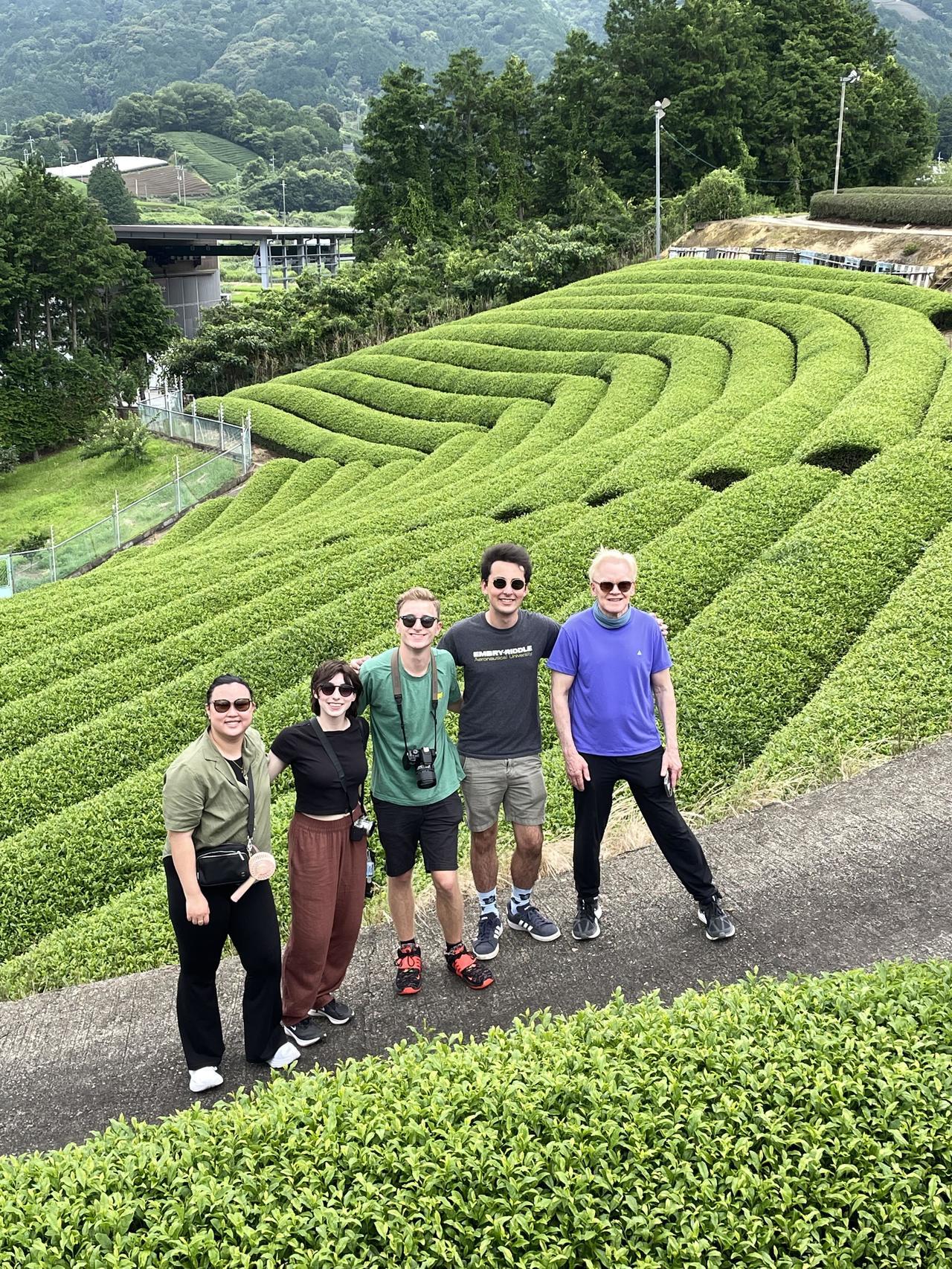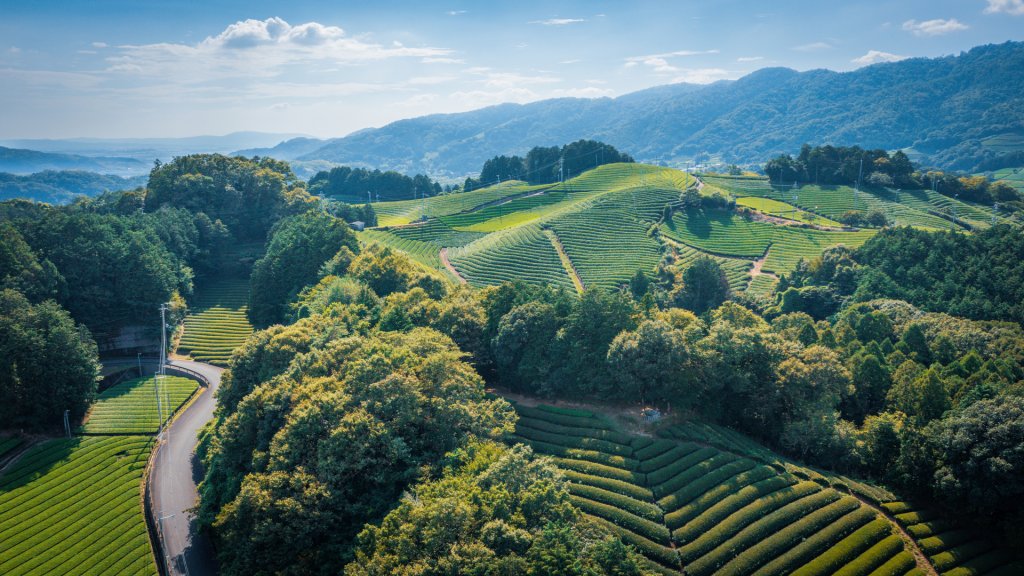
Located in the isolated mountains of Wazuka, the sprawling grounds of the Wazuka tea plantation stretch down into the valley and up steep mountainsides. Verdant, rolling hills of tea leaves cushion a small farming town of less than 3,600 people. It is here where the tradition of Japanese tea production thrives.
Honoring a history of over 800 years, the fields of the Wazuka plantation have been passed down for generations. China first introduced tea to Japan during the Nara period (710–794), and it is said the nearby Kaijusen-ji Temple first started the Japanese tea-drinking practice.
The tea grown in this area is called “Uji-cha” or “Uji tea,” and makes up almost half of the tea produced in the Kyoto region. In the patchwork of fields in Wazuka, three types of Uji tea are grown:
Tencha
-
- Tencha leaves are specifically grown to be ground into a fine tea powder called matcha but can be brewed as a loose-leaf tea. For 20-30 days out of its growing period, the tea plants are covered by shaded nets, which help concentrate sweet amino acids. Tencha is characterized by its smooth, mellow sweetness and a subtle umami (savory) aftertaste, a far cry from the “matcha” at Starbucks!
Sencha
-
- The most popular green tea in Japan! Before harvesting, Sencha is exposed to the most sunlight out of the three teas, which increases antioxidants. Most Japanese people enjoy this tea’s fresh, herbal notes and delicate sweetness. At certain temperatures, Sencha can develop a vegetal taste.
Gyokuro
-
- Gyokuro, or “Jade Dew”, is the highest quality tea grown on the Wazuka plantation. Gyokuro tea plants are covered for the majority of their growing period, resulting in a highly caffeinated tea with pronounced sweetness and complex umami flavor.
The elevated quality of Wazuka tea is attributed to time-tested hand-processing techniques but also the area’s geological conditions.
The clear waters of the Wazuka River cut through this valley, creating a phenomenon that gives Wazuka tea its unique fragrance. Kirika, or the “Scent of Fog”, is produced during a temperature gap between sunset and sunrise. The fog from the river floats up and over the fields, imbuing the tea leaves with kirika, and shielding them from UV rays that can make tea bitter.
The knowledgeable staff of the Wazuka plantation offers guided walking tours through these scenic fields, which are customizable to all walking levels. On our most recent visit to Wazuka, we enjoyed a class on all things tea, complete with a hands-on brewing lesson and tea tasting with traditional Japanese sweets.
Whether you are a matcha connoisseur or a casual tea drinker eager to learn more, the breathtaking views of sun-soaked fields and the unparalleled taste of Wazuka tea make for a unique treat for the senses!
By Annalise Durocher
